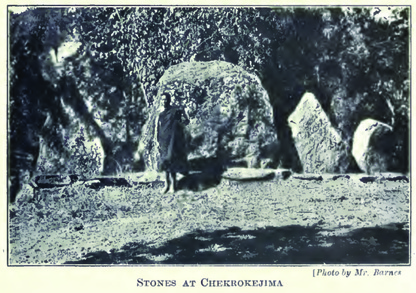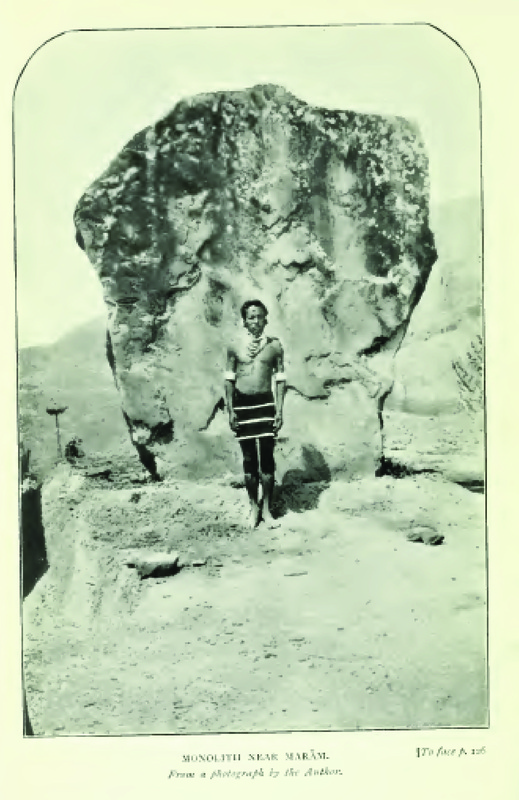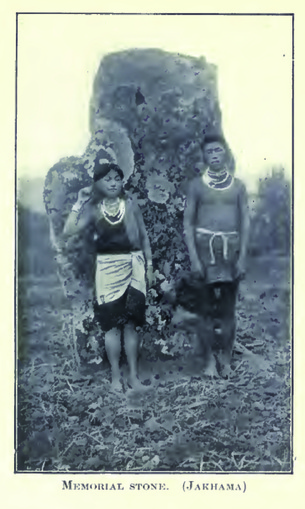| A common component of the claim that giant humans once inhabited the planet is that normal-sized humans could not have moved the big stones used to build various megalithic structures around the world (a similar logic is often used to argue for the necessity of ancient aliens). I’ll spare you a litany of references for now, but I can assure you that the notion is out there: giantologists say the use of big rocks in construction signals the presence of big people in prehistory. To them, the simplest explanation for megalithic monuments is not that normal-sized people had the capabilities and motivations to move big rocks, but that there must have been a supernatural race of giants (for which all direct evidence has somehow been suppressed by the Smithsonian) that was really interested, for some reason, in sticking stones in the ground. That's baloney. We have ethnographic examples of normal-sized people moving big rocks with minimal technology. It happened in the ethnographic present, and it almost certainly happened in the prehistoric past. While I was a graduate student at the University of Michigan, I had the opportunity to take classes from a lot of really smart people. I find myself drawing on that experience all the time. As I was thinking about giants the other day, I remembered a moment in a seminar taught by Kent Flannery and Joyce Marcus where they were talking about a ritual that involved the movement of some pretty big stones. I couldn’t remember the ethnographic reference, but after an email I learned that they discuss the case in their (2012) book The Creation of Inequality. The Angami Naga are/were an agricultural society in northeastern India, organized into autonomous villages whose residents were divided into clans. Flannery and Marcus (2012:107-109) describe a ritual of the Naga that involved moving multi-ton stones. A stone was moved from a distant quarry into the village as a way for the man who sponsored the “stone pulling” to build prestige: “For this spectacle the host turned to all the young men of his clan, all the alumni of his men’s house, and perhaps even his entire village. It was not unusual for 50 clansmen to turn out for this task, and when an entire village was involved, the crew could grow to several hundred men. . . . To be of value the monument had to come from a distant quarry. The Lhota Naga placed the stone on a heavy litter of wooden poles that could be carried by six rows of men, 12 per row. The Angami, who hauled even larger stones, levered the monument onto a sledge of heavy logs. Wooden rollers were placed in the path of the sledge and hundreds of men, using strong ropes made of tropical vines, pulled it along jungle trails for hours while singing along. All knew that at the end of their journey they would be welcomed with gallons of rice beer.” As anyone who has moved knows, the promise of beer at the end of a sweaty adventure is one of the best ways to recruit labor (even Pabst works -- it isn't really about quality). |
As Flannery and Marcus (2012:109) point out, the stone-pulling rituals of the Naga were performed in the context of societies where “leadership was based solely on achievement.” In other words, not only were these people moving some big rocks, but they were doing it without any centralized, hierarchical organizational structure. It should go without saying (but it probably doesn’t, so I’ll say it), but Hutton did not report that any of the Naga people were giants or in possession of alien technology. Of course, these stones are smaller than many used in megalithic construction. But they compare well in size to some moved by much more "complex" societies, such as the Olmec and the Maya (Flannery and Marcus 2012:109). And they were moved by normal-sized people armed only with ropes and wooden rollers and motivated by community, tradition, and the promise of beer. I think a lot of us can probably relate to that.
The giantologists should keep the Angami Naga in mind when they marvel at megaliths. It is probably unwise to assume that a bunch of enthusiastic humans can't figure out how to get a big rock from Point A to Point B.





 RSS Feed
RSS Feed
